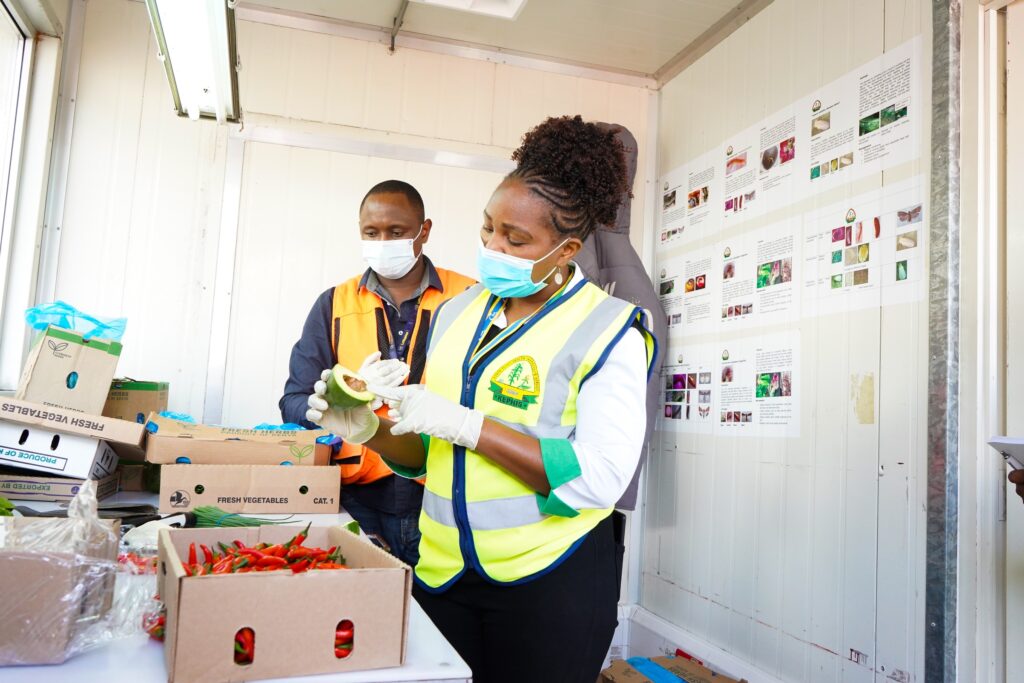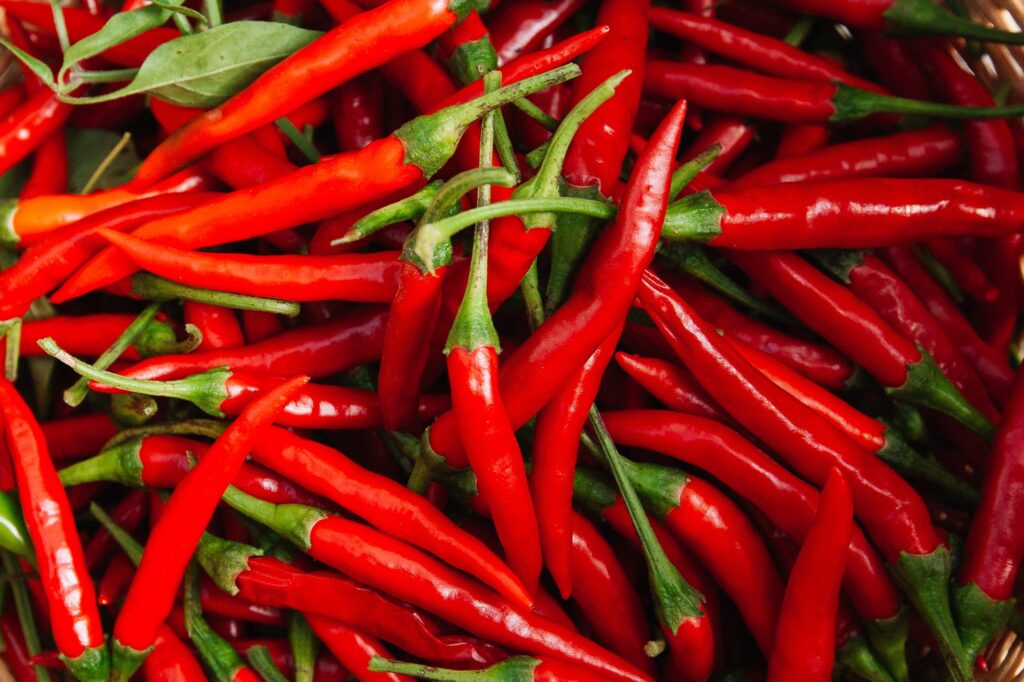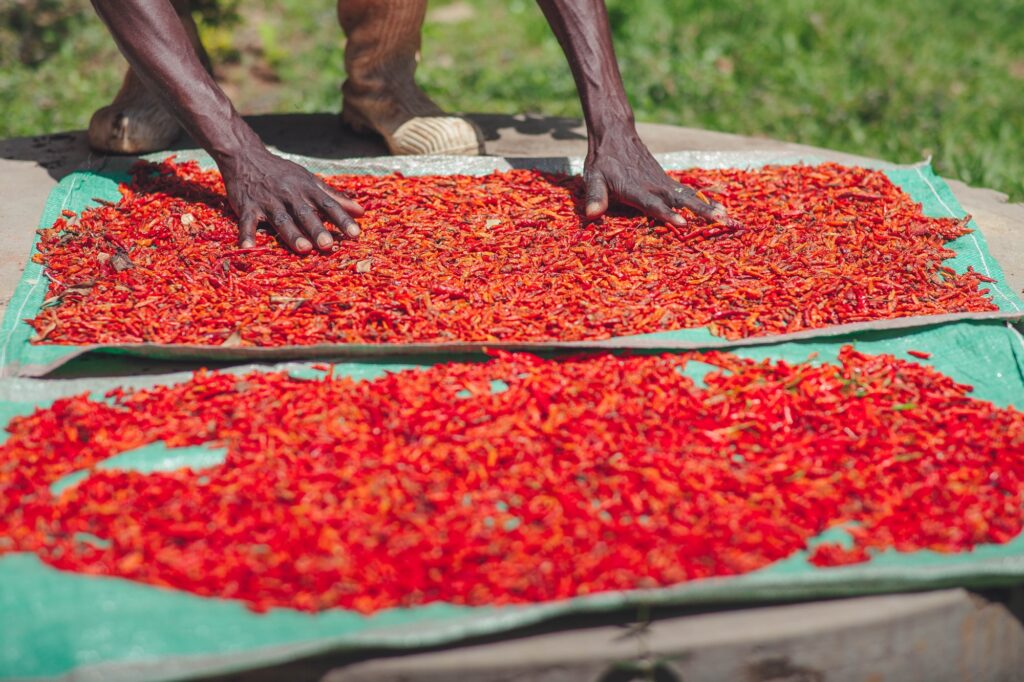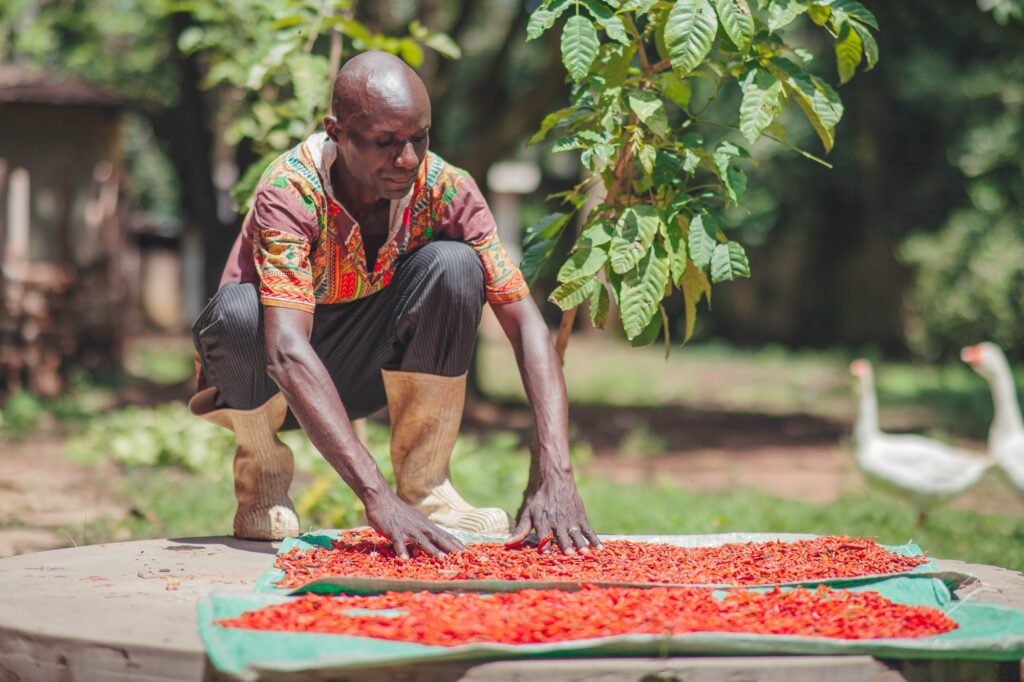chilies
- Home
- / chilies
Chilies production in Kenya
Chili/hot pepper is increasingly becoming one of the hottest crops for farmers and a household ingredient in Kenya. They are grown mostly for their fresh fruits used to flavor soups and stews and for seasoning and making sauces. The varieties of Kenyan chilies represent some of the hottest of them; Cayenne Pepper, African Bird Eye, Jalapeno, Serenade, habareno, and more. Some of the counties that thrive in Chili farming in Kenya include; Makueni, Kirinyaga, Machakos, Laikipia, Naivasha Meru, Nyandarua, and Embu with targeted export destinations including United Kingdom, France, Netherlands, Germany, Belgium, Russia, Djibouti, and the Middle East. Long cayenne (Capsicum annuum) is a hot type of pepper produced for domestic and export markets. During the year under review, the area under long cayenne increased by 1.5 percent from 327Ha to 331Ha. The volume produced increased by 15.5 percent from 2,821tons in 2016 to 3,258tons in 2017 with the values earned increasing by 7.1 percent in 2017 compared to 2016. The counties with the highest values were Taita Taveta, Kajiado, Makueni and Machakos accounting for 20.9, 13.5, 10.9, and 9.8 percent respectively of the country’s total value.
In the year 2017, the area under Bullet chilies declined by 2%, while the volumes and values increased by 2.6 and 2 %, respectively. The growth of this enterprise has been slowed down by the export self-burn occasioned by infestation by false codling moth which is a notifiable pest in the European Union market. The counties with highest values in the year 2016 were Kajiado, Machakos, Meru and Taita Taveta.
African birds eye (ABE) chilies (Capsicum frutescens) is produced for both the domestic and export markets and consumed either fresh or processed. In 2017 the area under African bird’s eye chillies, volume, and value increased by 28.7, 27.1, and 22.9 percent respectively compared to 2016. In 2017 Meru, Kwale, and Kilifi were the leading counties accounting for 52.36, 16.34, and 14.66 percent of the country’s value, respectively. Bell pepper (Capsicum annuum L.) is also referred to as sweet pepper or capsicum. The most popular variety is the green sweet pepper although yellow and red are also gaining popularity. The area under production increased from 648ha in 2016 to 776ha while production rose from 4,046tons to 5,008tones representing 19.7 and 23.8percent increase. The value increased from 196.67milion to 266.45milion in 2017 a 35.5percent increase.

Why the focus on the Chili value chain?
- Given the tropical climatic conditions of Kenya, chilies farming is ideal, and the warmer the growing conditions, the hotter the chili.
- The crop has a ready market and can grow in marginal areas with minimum rainfall.
Challenges in the Chilies value chain
The significant obstacles to the production of ABE chilies include inadequate knowledge on postharvest handling and the prevalence of diseases and the inaccessibility to quality planting material. The major challenges to production of long cayenne include inaccessibility of quality seeds and prevalence of pests and diseases. Common diseases include Anthracnose, bacterial wilts, Fusarium wilt, late blight, Downey and Powder mildews and rust. Virus infections are a major factor in reducing the productive life of commercial chili fields.


Nutritional value of Chilies
Research studies indicate that chilies have high nutritional value since they can be a source of vitamin C, Vitamin A, Vitamin B, iron, potassium, and magnesium. The capsaicin in them contain anti-bacterial, anti-diabetic, anti-carcinogenic and analgesic properties. They also help to reduce cholesterol levels in the body, aid in digestion, help relieve migraines, muscle and joint pain.
MARKUP interventions in the Chilies value chain
- Supporting the production and marketing systems to accelerate industry growth.
- Strengthening the capacity of farmer and marketing associations to structure the industry to meet the competitive standards for the EU and EAC markets.
- Collaboration between the Government of Kenya ministries at national and county levels and other stakeholders to establish sustainable solutions for the industry.

